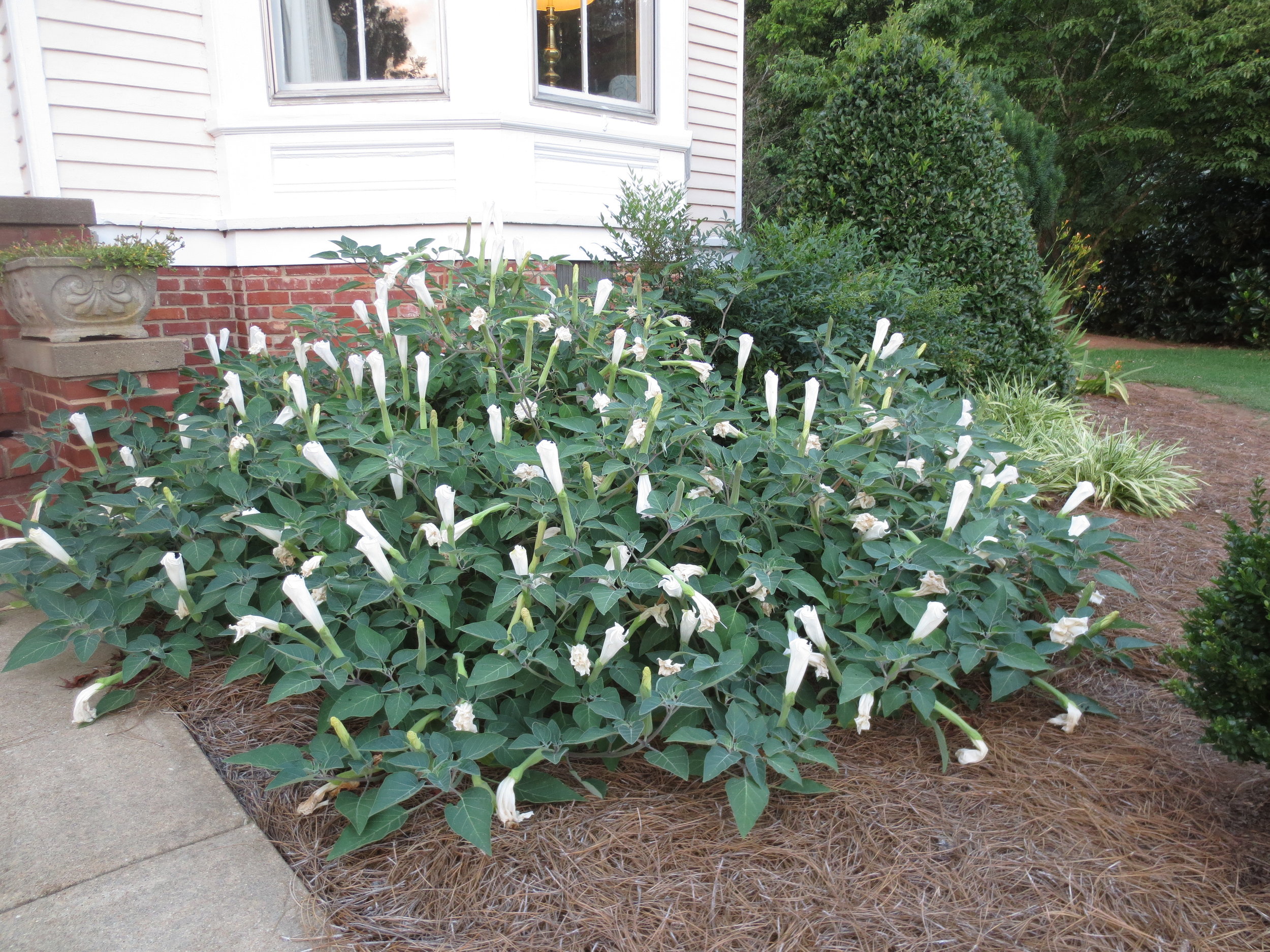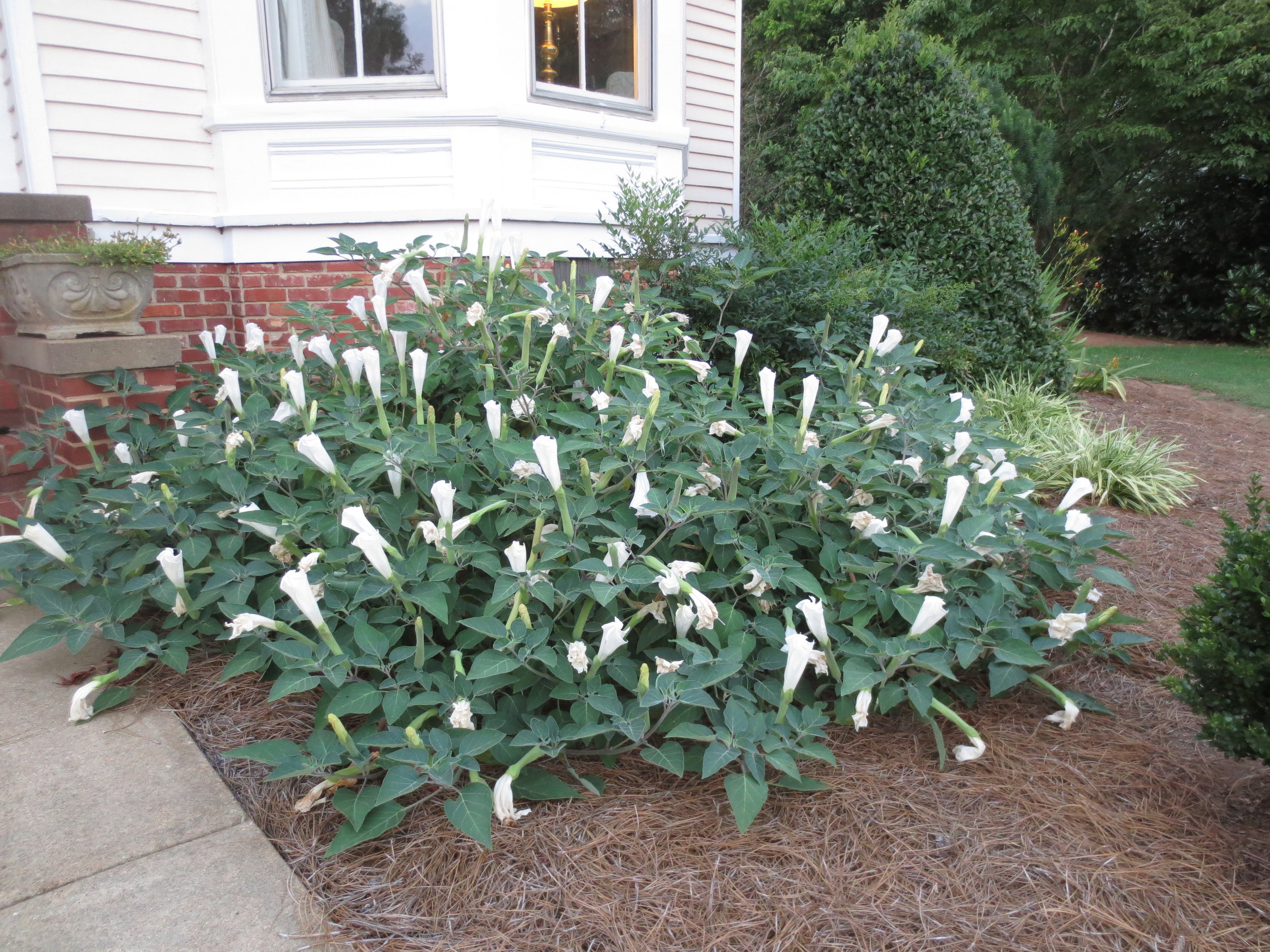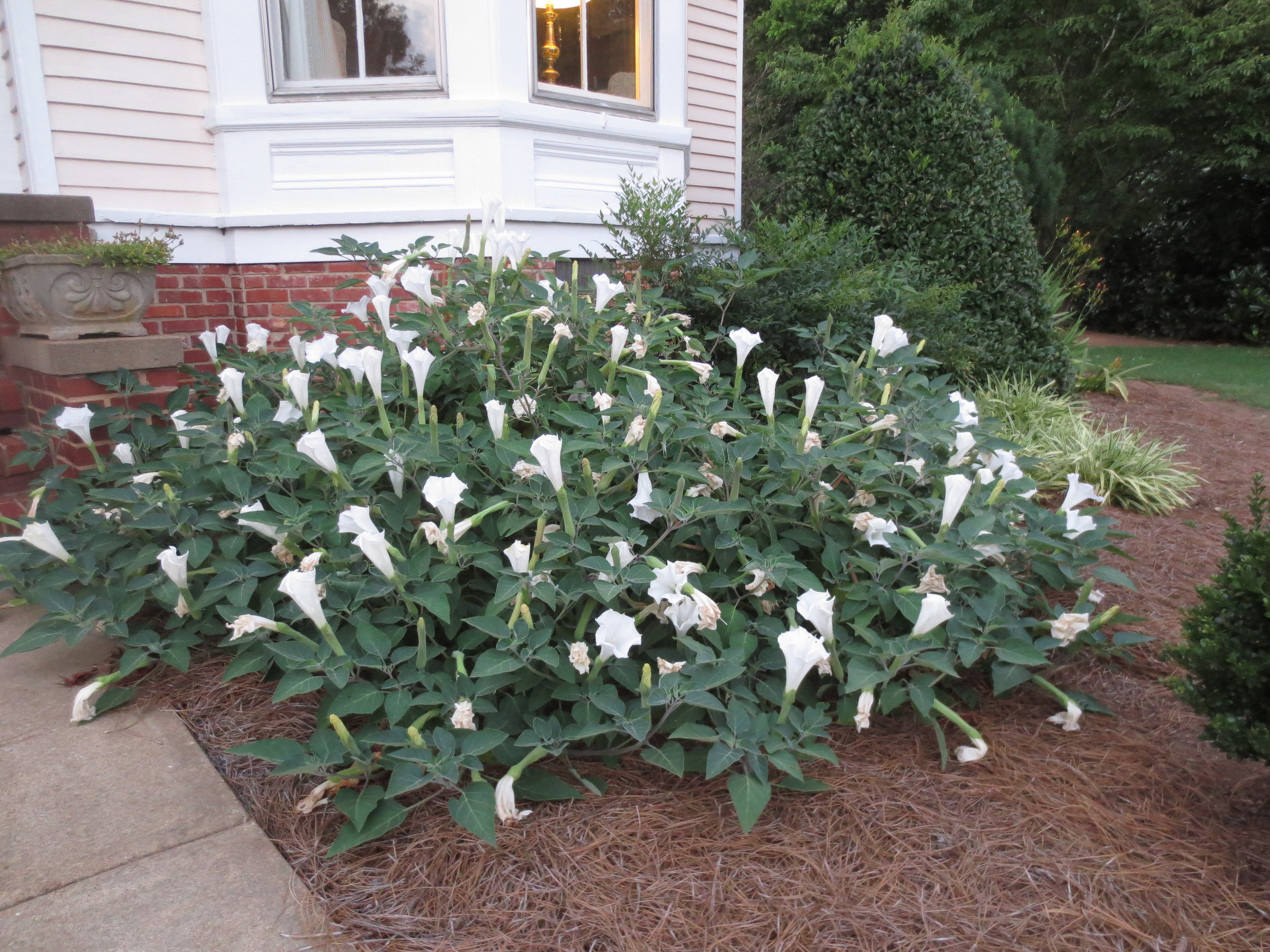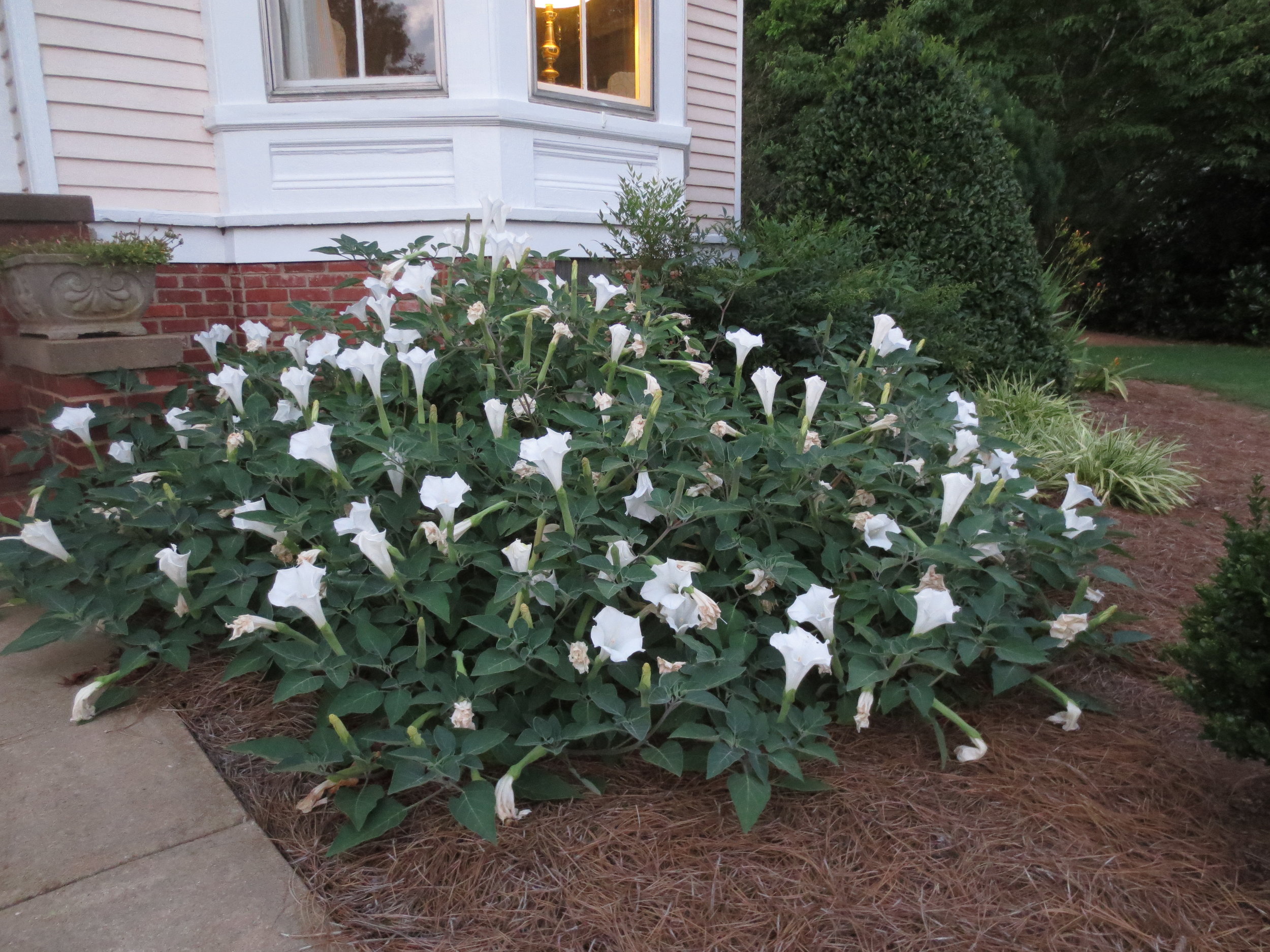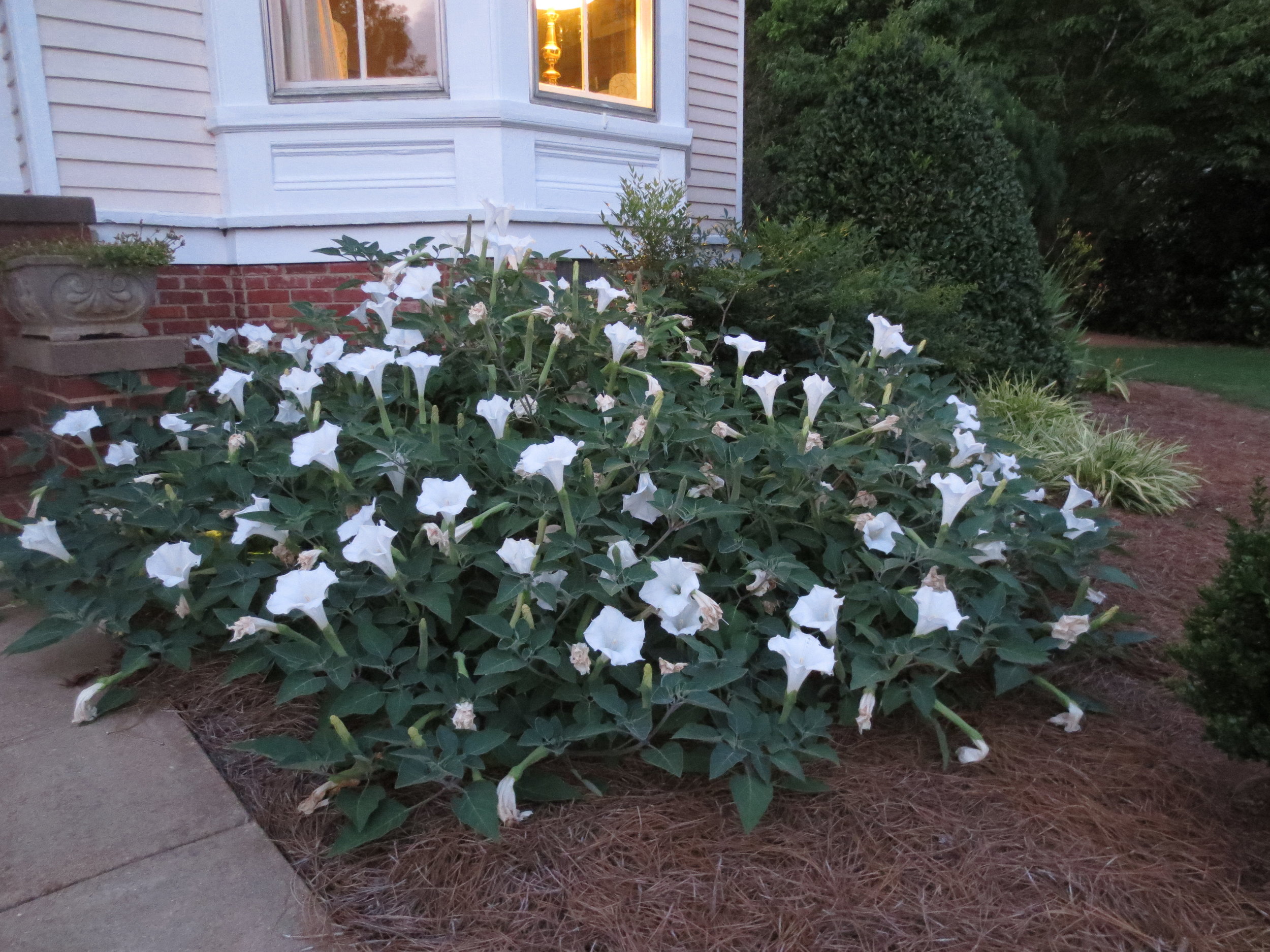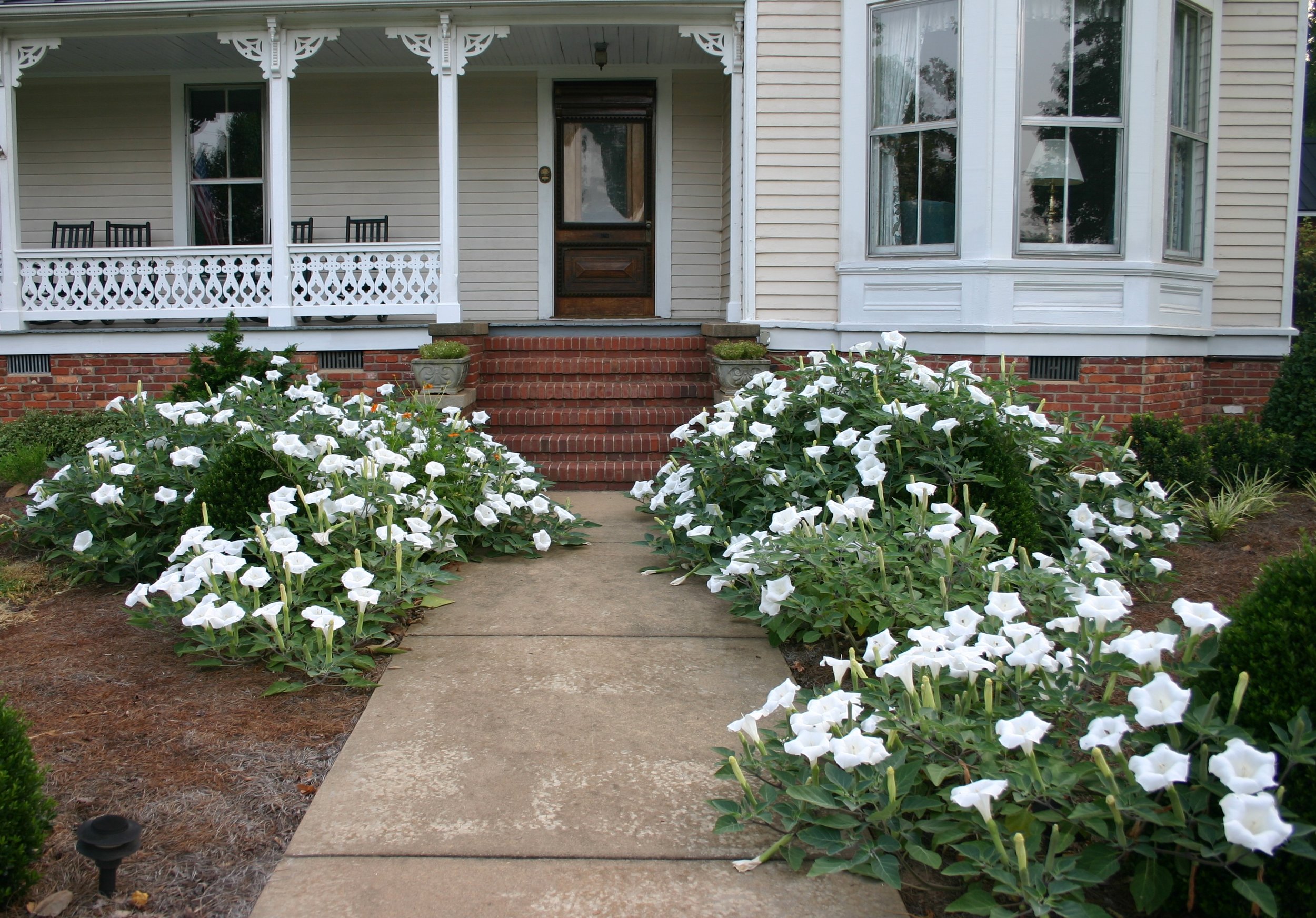Moonflower (Ipomoea alba) looks like a white Morning Glory on steroids. This heat-loving annual vine is easily started from seed and grows like the wind. It blooms from June to frost in my zone 7b garden. The moonflower’s claim to fame is that the flowers open at dusk and release a faint perfume. The scent attracts night-flying moths and makes it a perfect plant to site near your patio, porch or nighttime entertaining areas. When morning sun arrives, the blooms collapse like parachutes. The flowers stay open later on overcast days.
A single vine will grow to 10-feet tall when provided with a trellis. They can also be allowed to scramble across the ground, but I prefer them to be at nose-level to better enjoy the fragrance. Do not fertilize or you will sacrifice blooms to leaf growth. They rarely need supplemental irrigation. No need to deadhead, as the spent blooms shed naturally. Flowers can reach six-inches across.
The accompanying photo shows a pair of vines grown on a 7-foot tower. When the plants start growing vigorously, I guide the soft stems horizontally around the tower so that the entire structure will be clothed with leaves rather than having them clustered at the top and naked near the bottom. Vines twine to climb so they will not damage walls or wooden posts with adhesive feet.
Moonflower seeds are available in gardener centers and big box stores. The seeds are the size of peas, with a hard covering. I use a pair of nail clippers to snip a tiny hole of this hard shell and soak them in water overnight before planting. Use caution to avoid damaging the “eye” of the seed when snipping. This is where the first root, the radical, will emerge from the covering. The chip-and-soak procedure speeds germination. Start seeds about the same time you start tomato seeds. Any earlier is wasted effort, since the vines grow slowly until night temperatures are warm. Frost kills the tender vine, so it is a summertime pleasure only unless you live in frost-free zones, where they are perennial.
Unlike their Morning Glory cousins, Moonflowers are not invasive. Insects do not bother those grown on a trellis but I have seen evidence of slug nibbles on the vines allowed to trail across the ground. Because of the large seed size, quick growth and large flowers, these vines are a great plant to start with children.
The overcast morning allowed a photograph before the blooms closed.


